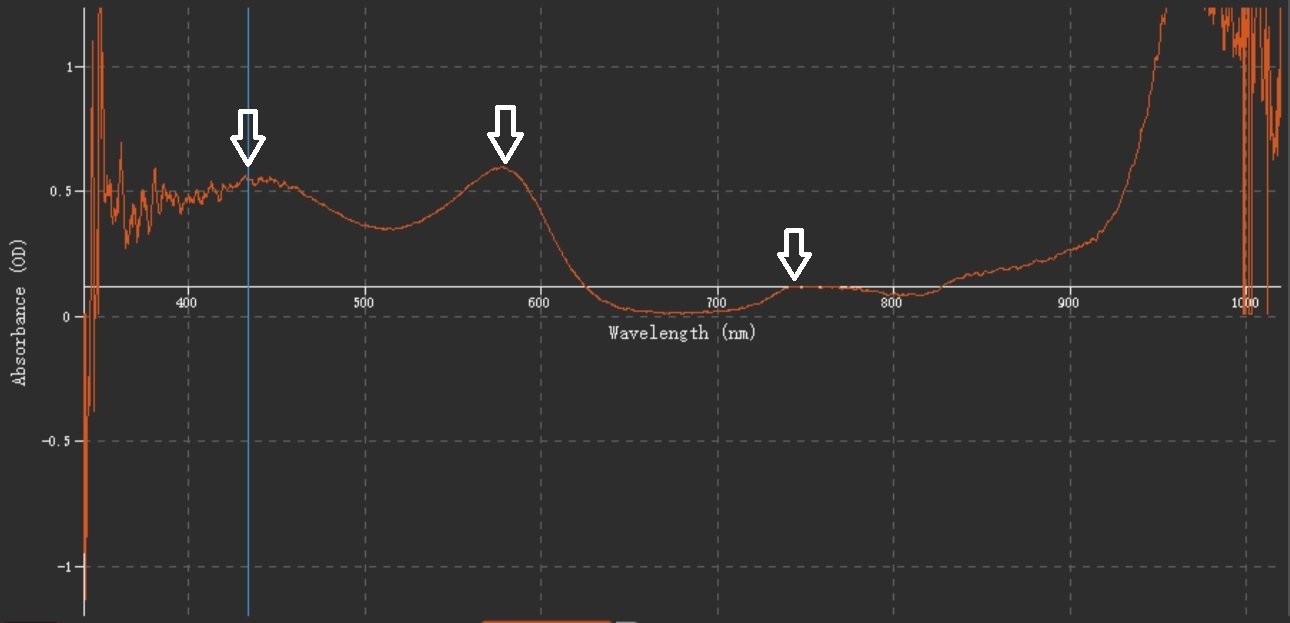Spectrometric determination of water pH
Experiments with the goal of understanding the effects of ocean acidification rely on accurate determination of pH in seawater. There are a number of ways of measuring pH, but one of the most accurate is the use of a spectrometer and a pH sensetive dye. In our experiment, pH was determined initially using a durefet sensor, which is an type of ion sensitive field effect transistor (ISFET). These probes were connected to relays which injected CO 2 when sensed pH was determined to be above the setpoint. Nonetheless, probes can vary in accuracy, and so regular spectrometery was needed to determine the actual pH in treatments and adjust relay setpoints as necessary.
The system we employed consisted of an Ocean Optics light source, a light attenuator, a sample cell where a cuvetter containing seawater samples were placed in the path of the light, and finally a mini spectrometer. Seawater samples were first loaded in a cylindrical cuvette with no air bubbles and heated to 25°C in a water bath. A baseline absorbance spectrum was then acquired using the Oceanview program set on absorbance mode. Here is an example baseline spectrum.

After this, 30 $\mu$ l of sample were removed and replaced with an equal volume of the dye m-cresol purple. After mixing, a new spectrum is acquired. Here is an example of a spectrum from a sample with m-cresol purple.

Of particular interest are the two peaks which appear at wavelengths 434 nm and 578 nm when the dye is added, as well as the peak at 730 nm which should not change when dye is added. The pH is determined by finding the ratio of the values from these first two peaks. The third peak is used as quality control as if it varies by more than 0.001, the sample should be retested. Calculations to determine pH from these measurements are found in “Guide to Best Practices for Ocean CO 2 Measurements”, PICES Special Publication 3, (Dickson et al., 2007).
Spectorometer pH determination was conducted not only to assess the difference between durafet measurments and actual pH, but also the difference between header tanks (which contained the probes) and the tanks containing animals, which might have lower pH due to animal respiration. Additionally, because CO 2 is dependent on temperature, spectrometer readings were taken daily during periods of experimental temperature increase. Otherwise, spectrometer measurements were collected once every three days over the course of the experiment.